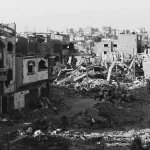Every year during the holy month of Shravan, Jammu & Kashmir witnesses a massive influx of pilgrims undertaking sacred journeys to Baba Amarnath, BudhaAmarnath, and Machail Mata temples. While rooted in centuries-old faith and tradition, these yatras today serve purposes far beyond spirituality,they have become powerful engines of rural economic development, driving income, employment, and infrastructure growth in some of the remotest corners of the Union Territory.
These pilgrimages are not just spiritual undertakings—they are lifelines for local economies, sustaining thousands of families, women artisans, self-help groups, and youth volunteers through a well-knit network of seasonal enterprise.
The BudhaAmarnathYatra in Poonch, the AmarnathYatra via Baltal and Pahalgam, and the Machail Mata Yatra in Kishtwar collectively transform the socio-economic landscape of their regions during yatra season. With the arrival of pilgrims, there’s a surge in demand for food, lodging, transportation, communication services, and local handicrafts.
Pop-up markets emerge almost overnight. Temporary stalls selling snacks, religious items, warm clothing, and medicines line the routes. Local farmers supply fresh produce, milk, and other essentials to langars and camps. Women’s self-help groups prepare prasad packets, handwoven shawls, and pooja kits, opening up new income streams and strengthening rural entrepreneurship.
The logistics of these pilgrimages require extensive manpower—porters, pony handlers, cooks, sanitation workers, drivers, and security volunteers. Local youth take on these roles with enthusiasm, gaining seasonal employment that often sustains them for the rest of the year. For many, these are not just jobs but opportunities for skill development, leadership, and discipline.
The hospitality sector, particularly homestays and guesthouses, experiences a significant boost. Many households convert parts of their homes into accommodations for pilgrims, offering an authentic cultural experience while generating steady income. This, in turn, encourages infrastructure upgrades such as improved sanitation, water supply, and digital connectivity.
Women play a central role in this seasonal economy. In regions like Kishtwar and Poonch, women-run cooperatives and craft clusters actively produce and sell local items—from woolen caps and handmade bags to herbal remedies and dried fruit snacks. Earnings during the yatra months often supplement or exceed household incomes.
Support from the government and local NGOs—in the form of micro-credit, training, and marketing assistance—has helped many women scale their businesses during peak demand.
The scale of these yatras has also pushed the administration to make long-term infrastructure investments. Road improvements, expanded mobile networks, medical camps, digital payment kiosks, and public amenities—once seasonal—are now becoming permanent fixtures, benefiting communities year-round.
In remote areas like Machail and Mandi, better access roads, health services, and information centers have steadily integrated these regions into mainstream development—all driven by the annual movement of pilgrims.
Moreover, what begins as a religious journey often evolves into sightseeing and cultural tourism. Pilgrims explore nearby valleys, lakes, and heritage sites, further contributing to the local economy through souvenir shopping, local cuisine, and extended stays.
This ripple effect supports a wide range of livelihoods—from artisans and folk performers to tour guides and taxi operators—who are often overlooked in conventional tourism. In areas like Anantnag, Pahalgam, and lesser-known villages en route to BudhaAmarnath and Machail, this blend of spiritual and rural tourism is forging new value chains.
The annual yatras of Jammu & Kashmir are more than religious events—they are catalysts for inclusive, grassroots development. They preserve traditional crafts, bolster rural supply chains, generate employment, and foster community engagement.
As pilgrims chant “HarHarMahadev” and embark on these sacred paths, they are also powering an economic transformation—quietly bridging urban-rural divides and proving that when nurtured mindfully, tourism can be both spiritual and sustainable.
In Jammu & Kashmir, the month of Shravan is not only a time of devotion—it is a time of renewal, opportunity, and empowerment.








